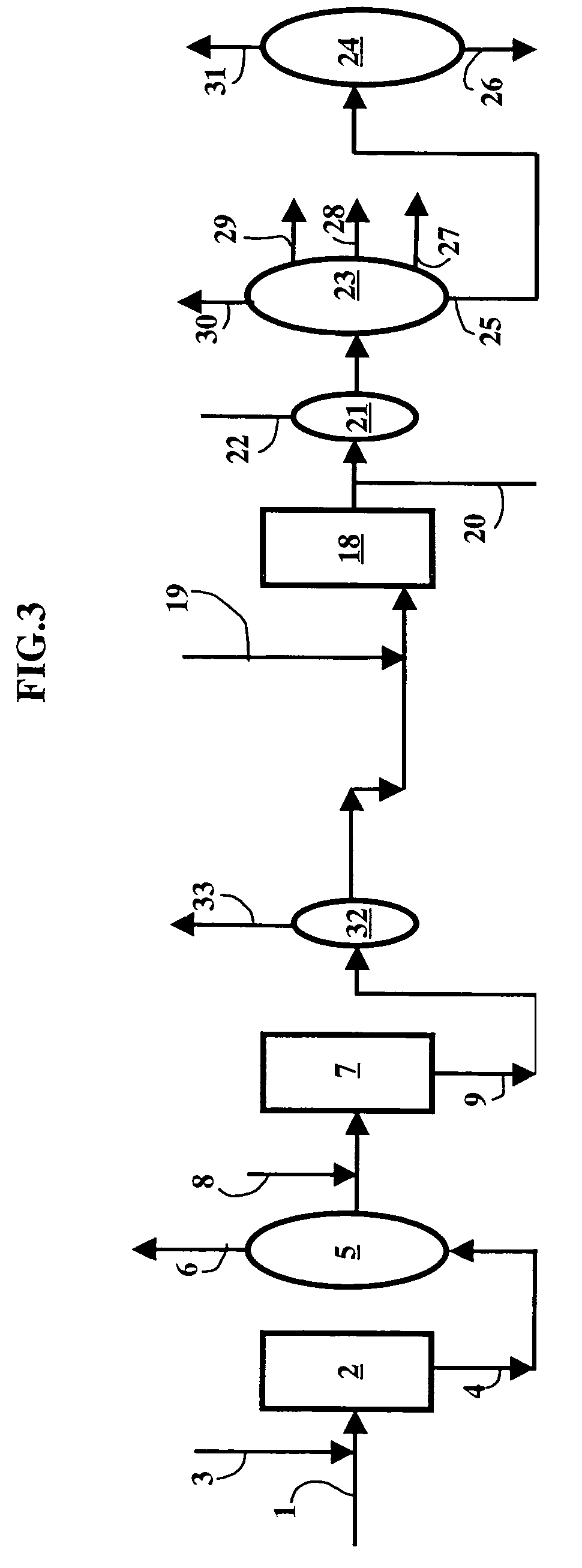Flexible method for producing oil bases and distillates by hydroisomerization-conversion on a weakly dispersed catalyst followed by a catalyctic dewaxing
a hydroisomerization and catalytic technology, applied in the direction of hydrocarbon oil cracking, hydrocarbon oil treatment, petroleum chemical modification, etc., can solve the problems of coagulation phenomena and high pour points, and achieve low volatility, good uv stability, and high viscosity index
- Summary
- Abstract
- Description
- Claims
- Application Information
AI Technical Summary
Benefits of technology
Problems solved by technology
Method used
Image
Examples
Embodiment Construction
[0023]The process according to the invention comprises the following stages:
The Charge
[0024]The hydrocarbon charge from which the high-quality oils and, optionally, middle distillates are obtained, preferably contains at 20% by volume of compounds boiling above 340° C., preferably at at least 350° C. and advantageously at at least 380° C. This does not mean that the boiling point is 380° C. and above, but 380° C. or above.
[0025]The charge contains n-paraffins. The charge is preferably an effluent produced in a Fischer-Tropsch unit. A wide variety of charges can be treated by the process.
[0026]The charge can also be, for example, vacuum distillates, resulting from the direct distillation of crude, or conversion units such as FCC, coker or viscoreduction, or resulting from aromatics extraction units, or resulting from hydrotreatment or hydroconverson of ATRs (atmospheric residues) and / or VRs (vacuum residues), or the charge can be a deasphalted oil, or a hydrocracking residue, for exa...
PUM
| Property | Measurement | Unit |
|---|---|---|
| pressure | aaaaa | aaaaa |
| temperature | aaaaa | aaaaa |
| boiling point | aaaaa | aaaaa |
Abstract
Description
Claims
Application Information
 Login to View More
Login to View More - R&D
- Intellectual Property
- Life Sciences
- Materials
- Tech Scout
- Unparalleled Data Quality
- Higher Quality Content
- 60% Fewer Hallucinations
Browse by: Latest US Patents, China's latest patents, Technical Efficacy Thesaurus, Application Domain, Technology Topic, Popular Technical Reports.
© 2025 PatSnap. All rights reserved.Legal|Privacy policy|Modern Slavery Act Transparency Statement|Sitemap|About US| Contact US: help@patsnap.com



